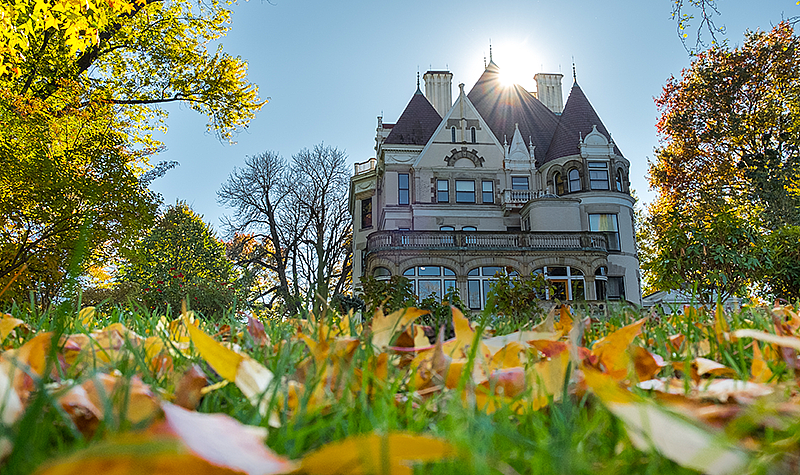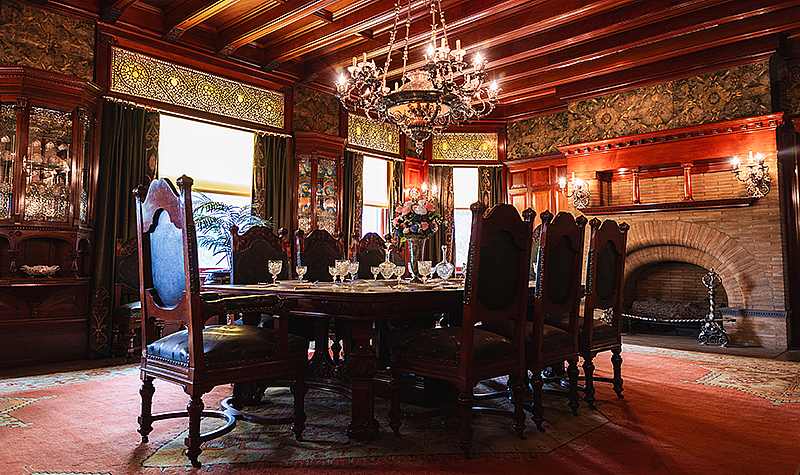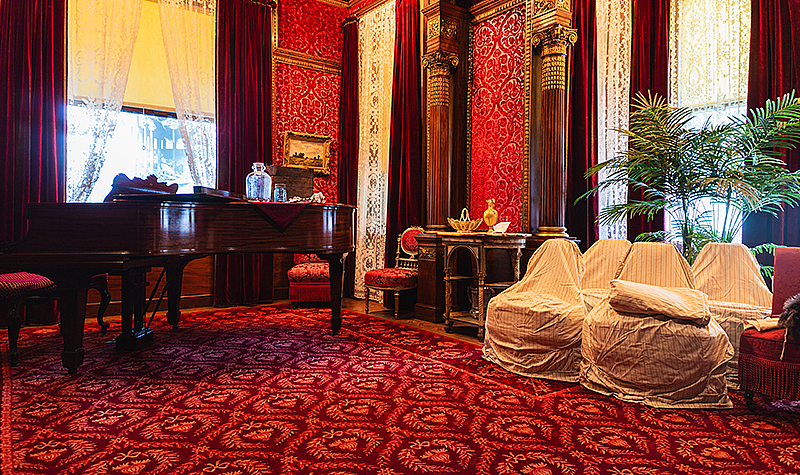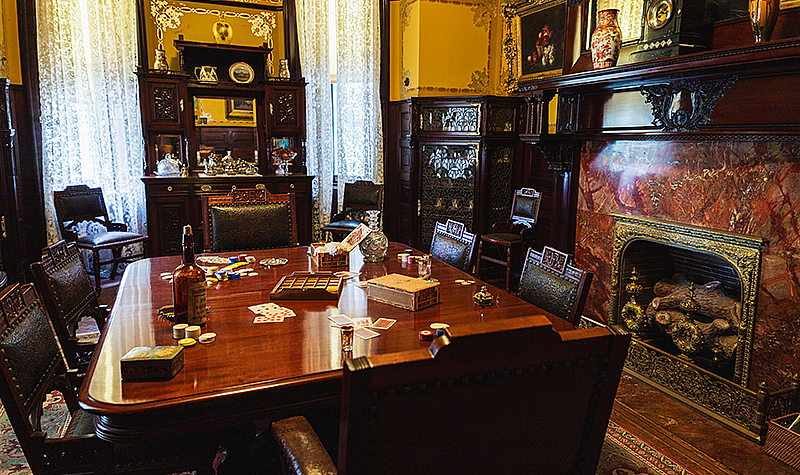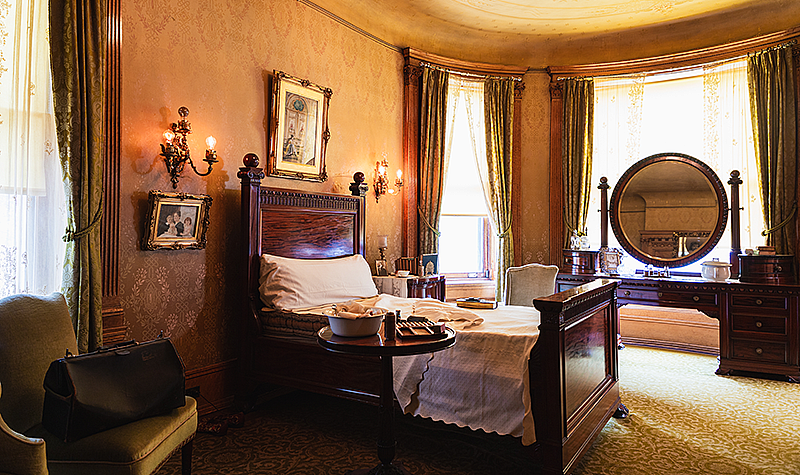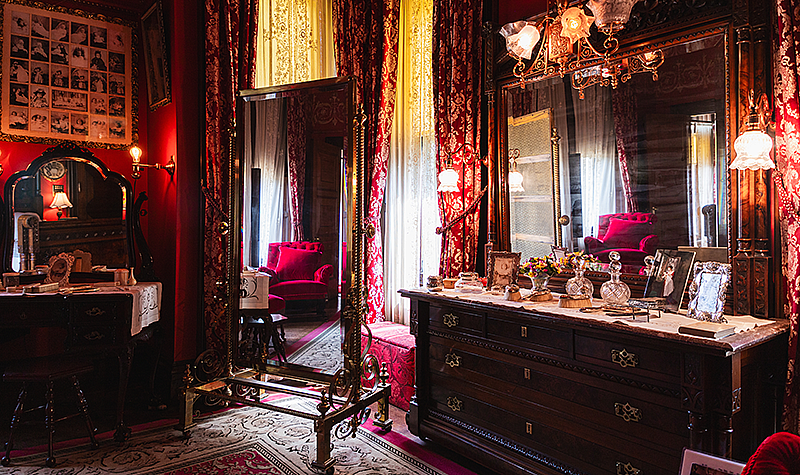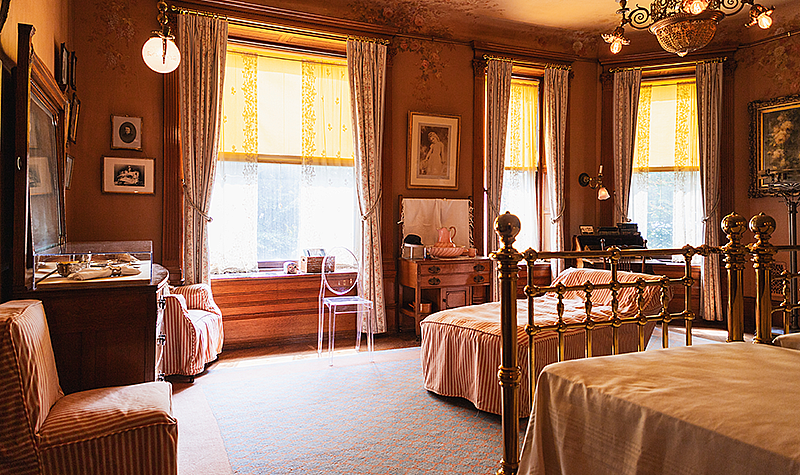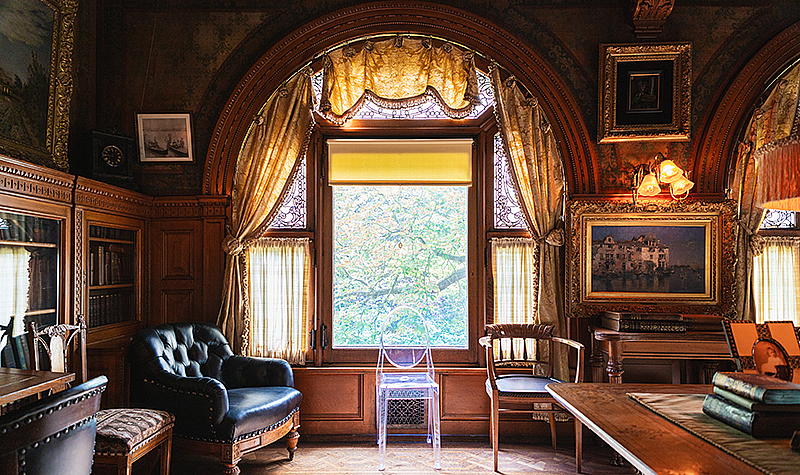Clayton
About Clayton
The home of the Henry Clay Frick family from 1882–1905, this meticulously preserved 23-room mansion reveals the lifestyle of a prominent, wealthy family who lived in Pittsburgh at the height of the city’s cultural and economic importance. Today, Clayton is the last remaining home of its kind in Pittsburgh, standing as a testament to another era and offering unique insights into our city’s past.The Frick family — Henry Clay Frick, Adelaide Howard Childs Frick, and their children, Childs Frick, Martha Howard Frick, Helen Clay Frick, and Henry Clay Frick, Jr. — lived in Clayton during the Gilded Age, the forty-year period following the end of the American Civil War, a time of rapid, intense change that ushered in the modern era of the United States. Forces such as industrialization, urbanization, technological advances and immigration collided to fundamentally alter the American way of life — creating great wealth and progress, but also social upheaval and startling inequity that continue to impact our world today.
About the Clayton Tour Experience
Guided tours of Clayton immerse visitors in the year 1892, a critical year for our nation, Pittsburgh, and the Frick family. Considered to be the height of the Gilded Age, the early 1890’s brought the era’s extremes into stark relief — both the progress of technological advancements and economic growth, and the harsher realities of issues like wealth disparity, social unrest, and environmental degradation. Nowhere were these extremes more pronounced than in Pittsburgh — America’s industrial powerhouse and one of the era’s most influential cities. Tours of Clayton explore how these extremes affected the lives of everyone who lived in Pittsburgh at the time, though in dramatically different ways."It's always a great experience. I've been three times now and each time it gets better. Each guide gives a new light to each room and time period, which is always interesting and so, so welcome."
- Joshua K.
Rather than focus on the design of Clayton and its contents, this tour experience emphasizes the stories of real people — those who lived within Clayton’s walls and those who did not. Visitors to Clayton should expect to participate in a dialogue alongside their guide and other visitors. Conversations will include discussions of a wide variety of historical experiences, not just those of the Frick family, as well as the ongoing legacy of the Gilded Age and its impact on our lives today.
"The tour was not romanticized; it was based on facts and reality. I really loved it. I have never been in a tour where the guide tells us exactly how things were during that time. We were so interested that we continued doing some research at home that evening."
- Yesenia F.
Content advisory: 1892 was a tumultuous year for the Frick family and the Pittsburgh steel industry. For this reason, tours of Clayton deal with potentially challenging subject matter, including discussions of violence, grief and child loss.
While all are welcome on tours of Clayton, the tour is most appropriate for children 9 years and older.
Know Before You Go
- Only Clayton’s first floor is wheelchair accessible. Video accommodations are available for those who are unable to visit the second floor. Click for more information about accessibility.
- All Clayton tours begin at the Grable Visitor Center. Advance reservations are highly recommended. Reserve tour tickets here.
- Photography is not permitted in Clayton.
- Strollers are not permitted in Clayton.
- Group tours are available for groups of 11 or more. Learn more about reserving group tours.
- The Frick is proud to participate in Blue Star Museums, offering free admission to active-duty military, national guard, and reserve personnel and up to five members of their families from May 21–Sept. 5.
Clayton Reimagined
Clayton opened to the public in 1990 as part of the vision of Helen Clay Frick, who sought to preserve her family home and her father’s legacy for public benefit. When the house opened, visitors experienced the home through a docent-led tour that focused primarily on the experiences of the Fricks as a wealthy, white family living in Pittsburgh during the Gilded Age. In the more than 30 years since, we have welcomed hundreds of thousands of visitors to one of the most authentic historic houses in the country.Today, The Frick Pittsburgh furthers Helen’s vision of sharing authentic experiences with art, history and nature, and more recently, the Frick has adopted a strategic plan that includes a commitment to expanding access and telling inclusive stories. As part of these commitments, in 2021, the Frick Pittsburgh embarked on a grant-funded project to develop a new tour experience in Clayton. The goal was to create a visitor experience that resulted in a fuller, more complex view of late 19th-century Pittsburgh.
One of the most exciting parts of our efforts to reimagine the Clayton tour experience is that we didn’t do it alone. For the first time since the house opened to the public more than 30 years ago, a diverse group of scholars, community stakeholders, researchers, and museum leaders came together to think creatively about Clayton, its stories, and its future. This new tour experience, Gilded, Not Golden, launches in May 2023 thanks to the dedicated work of so many. The Frick Pittsburgh is honored to work with this incredible group of people and grateful for the support and expertise each individual brought to the project.
The Frick Pittsburgh owes additional gratitude to Michelle Moon and Rainey Tisdale, interpretive specialists, for their guidance and expert stewardship of this project.
Advisory Board
Ron Baraff
Director of Historic Resources and Facilities, Rivers of Steel
Dr. Rudi Batzel
Assistant Professor of History, Lake Forest College
Callie Hawkins
Director of Programming, President Lincoln’s Cottage
Ryan Henderson
Interpretive Specialist, Rivers of Steel
Dr. Modupe Labode
Curator, National Museum of American History
Dr. Amanda Moniz
Curator of Philanthropy, National Museum of American History
Monica Montgomery
Director of Community Engagement and Programs, Historic Germantown
Dr. Jessie Ramey
Associate Professor of Gender Studies, Chatham University
Doug Swanson
Assistant Professor of Writing, University of Pittsburgh
Dr. Sarah Weicksel
Director of Research and Publications, American Historical Association
Dr. Sylvia Rhor Samaniego
Director of the University Art Gallery, University of Pittsburgh
Sonnet Takahisa
Independent Educator, Arts and Cultural Strategies, Inc.
Dr. Nicole J. Williams
Curator of Collections, Preservation Society of Newport County
